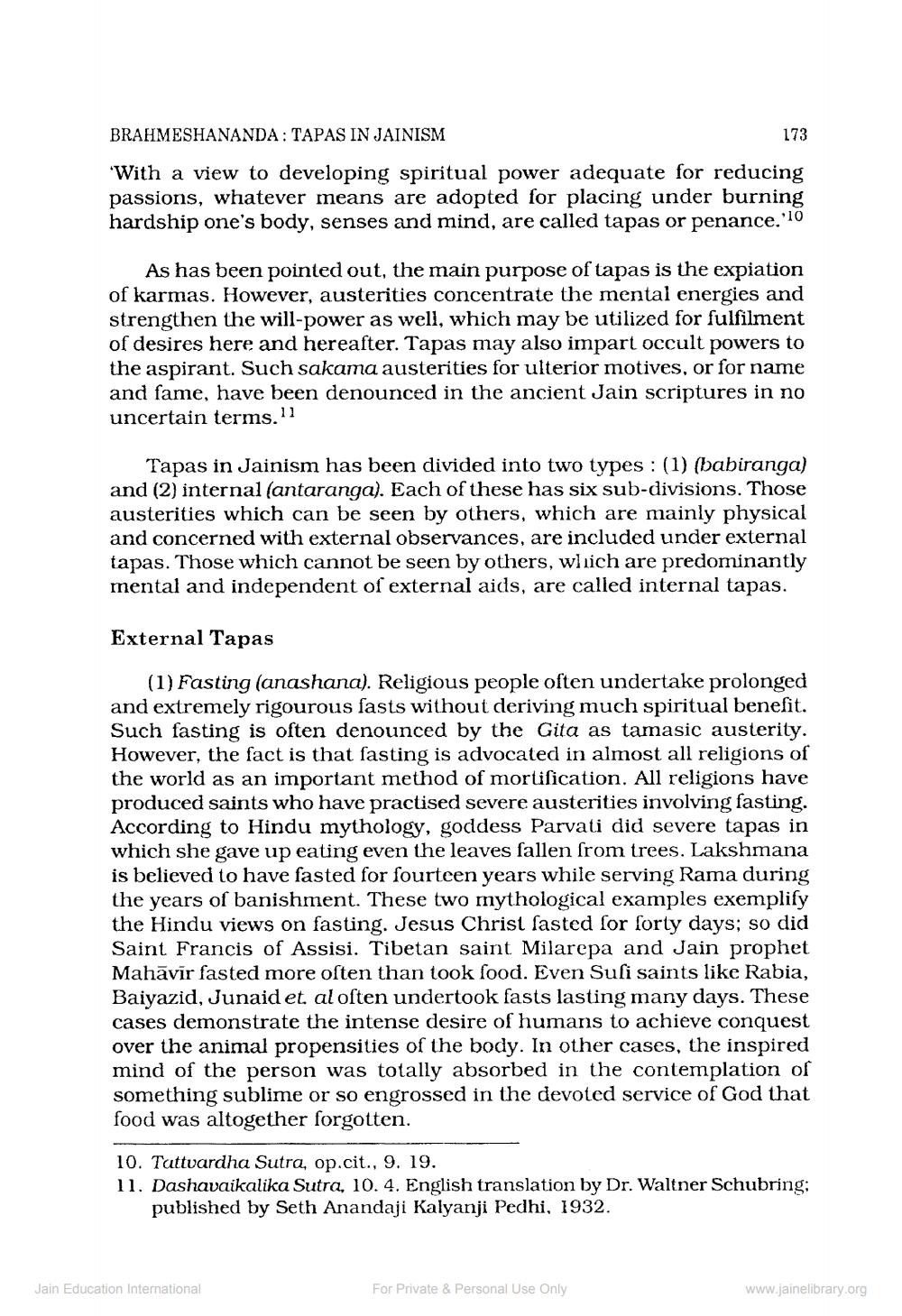________________
BRAHMESHANANDA: TAPAS IN JAINISM
173
'With a view to developing spiritual power adequate for reducing passions, whatever means are adopted for placing under burning hardship one's body, senses and mind, are called tapas or penance.'10
As has been pointed out, the main purpose of tapas is the expiation of karmas. However, austerities concentrate the mental energies and strengthen the will-power as well, which may be utilized for fulfilment of desires here and hereafter. Tapas may also impart occult powers to the aspirant. Such sakama austerities for ulterior motives, or for name and fame, have been denounced in the ancient Jain scriptures in no uncertain terms. 11
Tapas in Jainism has been divided into two types : (1) (babiranga) and (2) internal (antaranga). Each of these has six sub-divisions. Those austerities which can be seen by others, which are mainly physical and concerned with external observances, are included under external tapas. Those which cannot be seen by others, which are predominantly mental and independent of external aids, are called internal tapas.
External Tapas
(1) Fasting (anashana). Religious people often undertake prolonged and extremely rigourous fasts without deriving much spiritual benefit. Such fasting is often denounced by the Gita as tamasic austerity. However, the fact is that fasting is advocated in almost all religions of the world as an important method of mortification. All religions have produced saints who have practised severe austerities involving fasting. According to Hindu mythology, goddess Parvati did severe tapas in which she gave up eating even the leaves fallen from trees. Lakshmana is believed to have fasted for fourteen years while serving Rama during the years of banishment. These two mythological examples exemplify the Hindu views on fasting. Jesus Christ fasted for forty days; so did Saint Francis of Assisi. Tibetan saint Milarepa and Jain prophet Mahāvir fasted more often than took food. Even Susi saints like Rabia, Baiyazid, Junaid et al osten undertook fasts lasting many days. These cases demonstrate the intense desire of humans to achieve conquest over the animal propensities of the body. In other cases, the inspired mind of the person was totally absorbed in the contemplation of something sublime or so engrossed in the devoted service of God that food was altogether forgotten.
10. Tattvardha Sutra, op.cit., 9. 19. 11. Dashavaikalika Sutra, 10.4. English translation by Dr. Waltner Schubring:
published by Seth Anandaji Kalyanji Pedhi, 1932.
Jain Education International
For Private & Personal Use Only
www.jainelibrary.org




